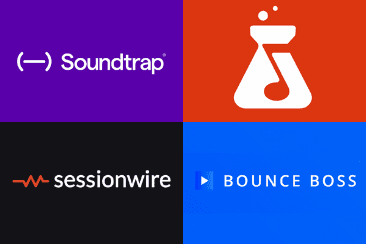If you’ve been listening to your favorite jazz trio or perhaps a metal band, you may start to notice that the beat seems to be skipping all over the place. Although the band seems to understand what they are doing, you might be wondering, where is the beat? The likelihood is that the band has decided to break away from their comfort zone of monotonous rhythmic structure and is exploring the stimulating musical world of syncopation.
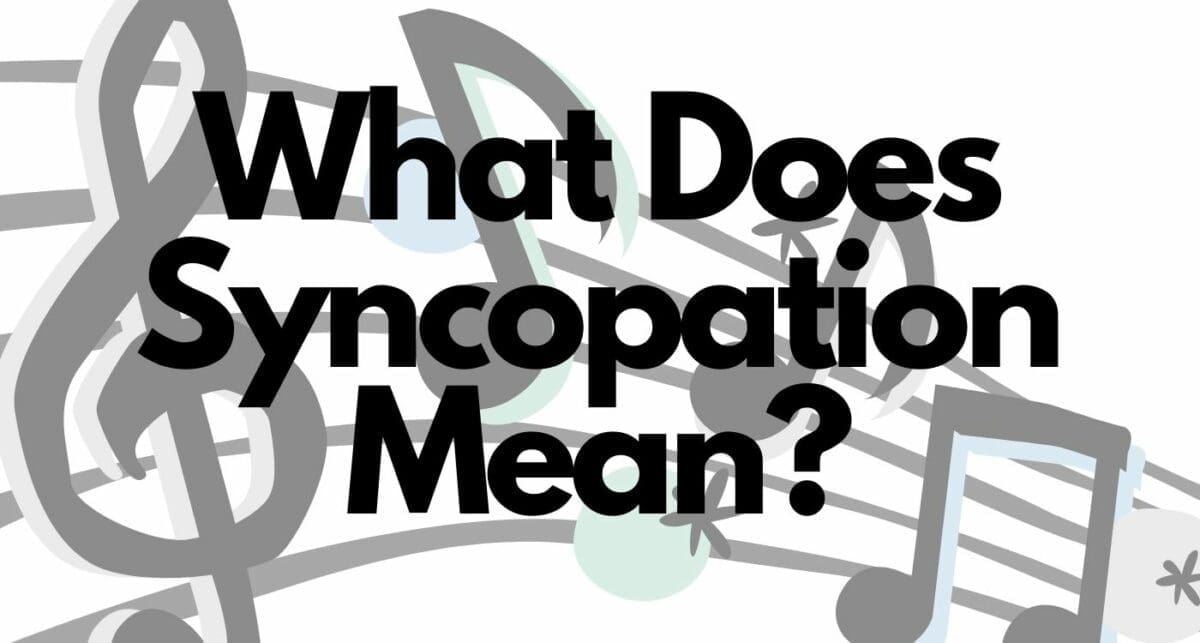
The idea of music syncopation is quite a straightforward one. If musicians are not careful, music with no syncopation can become boring. This guide will walk through everything needed to be known about what a syncopated rhythm is, syncopation meaning in music, and the definition of syncopated music.
What Is Syncopation?
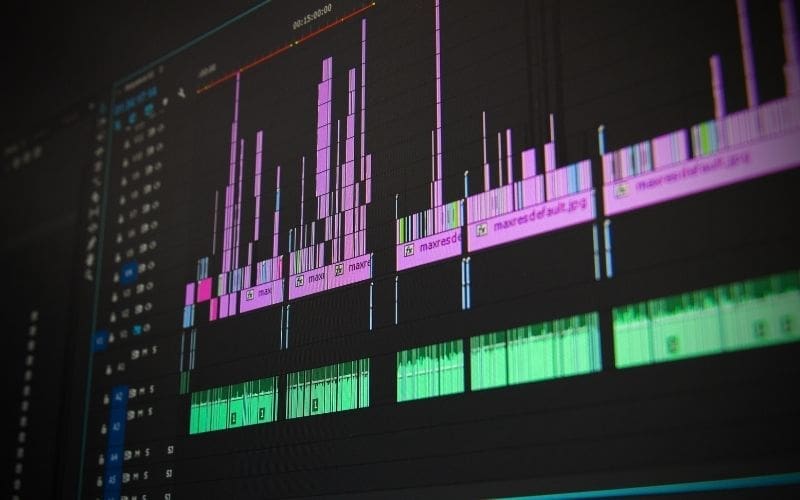
Syncopation is a deviation from the standard, anticipated rhythmic pattern that often places stress (by dynamic accents) onto weaker beats or skipping stronger beats. Syncopation has been an important feature of twentieth and twenty-first-century music, predominantly popular in music covering African-American tradition, from ragtime music of 1920s New York, to jazz, funk, reggae, rock, and hip-hop.
A musician’s take on accenting a measure of music defines the level of syncopation in their music. During counting, there is a natural “stress” (known as a dynamic accent) on the downbeats (consider 1and 2 and 3 and 4 and). In syncopation the rhythmic pattern will usually ignore the strong downbeat or stress an unexpected part of the rhythm, usually using 8th notes and 16th note patterns (for example 1 and2 and 3 and 4 and). Weak beats regularly become “strong” and strong beats get brought down.
Music syncopation is the key to intricacy as well as complex rhythms which instantaneously add interest to the music being played. Since the beginning, musicians from almost all genres have dipped their toes into the syncopation pool, recognizing that immense things occur with the beat of a song as it is played around with.
Why Does Syncopation Matter?

When artists stick to straight, precise rhythms, they are more likely to miss out on a world of fun and creative music. Syncopation is to rhythm what dissonance is to melody – it produces a longing for resolution and is the reason for forward motion. So, why does syncopation matter? The main reason is that syncopation adds elation to music by playing with the expectation of where the beat is expected to happen. The groovy approach interrupts the straight feel when each note falls on the predictable beat.
Syncopation grabs the attention of the listener. It shocks the ear by playing on awareness and expectation of straight rhythms. Surprisingly changing the pattern or stressing off beats enhances variation, character, and new harmonies to the music. Emphasizing notes beyond the continuous pulse also allows artists to generate stimulating rhythms when recording or performing. It also enables music to have a more human quality. Music that only plays on the beat usually sounds unmoving, dull, and machine-made and lacks flaws that make music more relatable. With syncopation, artists can use that imperfection and make it sound good.
Here are some key reasons why you should learn syncopation:
Play Music Effortlessly
At the present time, most of the music anyone listens to will have some form of syncopation. By discovering the rhythmic structures which inspire songs, artists will learn to understand how to play them without getting their strings in a twist.
Make Music Sound Dynamic
The swiftness of syncopation lifts music from sounding good to great, and gives it an extra punch! The significance of syncopation in generating unpredicted, “groovy” rhythms can’t be exaggerated. Rhythmically multifaceted genres such as Latin music, funk, and jazz would not occur without some syncopation.
Make It Simpler To Form Lyrics (And To Sing Along)
Lyrics are frequently syncopated! The nature of language and speech indicates that it would be rare for words or phrases to fall perfectly in 4/4 time with beats 1 and 3 being the strongest. Speech happens to be more nuanced than that, with stressed syllables of lyrics regularly falling on sixteenth notes, thirty-second notes, and normally amongst beats. When musicians have lyrics in mind, they can try producing a syncopated instrumental rhythm to accompany the lyrics, which matches the syllable stress pattern of the words used.
Two Birds, One Stone
When learning syncopation, it allows understanding of possibly one of the hardest areas in music theory: polyrhythms! Polyrhythms accurately use numerous conflicting rhythms, that are simultaneously being played. These pieces can offer an excellent listening exercise; if artists can understand polyrhythms, they have already figured out syncopation!
Types Of Syncopation
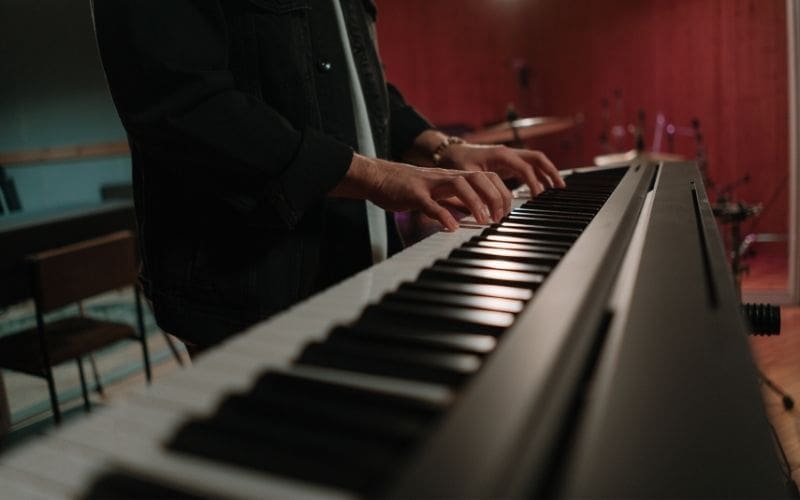
There are plenty of ways to syncopate a rhythmic pattern in music. Most are not too complicated, whereas others are more demanding. Here are four of the more popular types of syncopation.
The Backbeat
Usually, western music is written in 4/4 time, with the most fundamental rhythms highlighting beats one and three of each measure. As a musician, the idea of syncopation can be produced by moving accent to beats two and four of each measure. This technique is known as “backbeat,” which is an important part of rock and roll as well as dance music.
Anticipations
Anticipating the downbeat indicates playing a note on the beat before the downbeat, or the note it is written on and accompanying the note into the downbeat, rather than playing a note on the beat itself. Play the note on beat four of the prior measure rather than on beat one, then sustain that note. In rock, jazz, and hip-hop, the anticipation generally occurs on the ‘and one’, which is usually the last eighth note in a measure of 4/4. This is why the downbeat of that measure was ‘anticipated’. This method is also referred to as ‘suspension’ in music theory.
Delayed Attacks
Skipping the downbeat instead of anticipating it is known as the delayed attack. It is where the beat is played straight after the downbeat – whether that’s one-eighth note or one-quarter note later. To use delayed attack anticipation, remain silent on the downbeat and then play the note straight after.
Beat-level Syncopation
For beat-level syncopation, artists have to keep a constant pulse, where the pulse usually falls on the “weak” beats rather than typically “strong” ones. The easiest way to do this is by moving the pulse over by an eighth note. In its place, sensing a pulse on the downbeat of beat one, two, three, and four in a 4/4 measure, it gains the pulse on the ‘and of one’, the ‘and of two’, etc. This style that enhances off-beats is the main feature in reggae, jazz, and funk music.
How To Use Syncopation When Composing Music
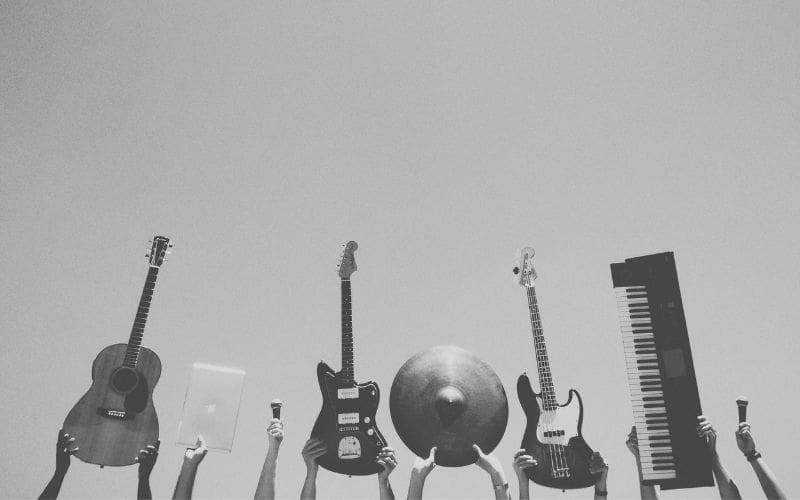
If musicians are looking to add syncopation to their own music, these tips can help:
Build Off The Downbeat
Artists can enhance rudimentary syncopation in music by shifting the basic rhythm of the downbeat. For example, when composing a piece of music in a 4/4 time measure, musicians are able to adjust the accents away from the steady pulse of quarter notes (or the downbeat) to the eighth note right next to the downbeat. This is what musicians refer to as the ‘and one’.
Use Triplets
An alternative way to add syncopation to music is by including triplets. For music theory, the triplet is a three-note pattern that fulfills the duration of a standard two-note pattern. Rather than dividing each beat of a 4/4 signature into pairs of eighth notes, musicians can use a mixture of eighth notes and eighth-note triplets that have three to a beat. Musical pulse can still be determined via the first note in each triplet, however by presenting that triplet feel on top of the 4/4-time signature the basic layer of syncopation has been enhanced.
Experiment With Weaker Beats
What each syncopated pattern has in common is that they place accents on weak beats, such as two and four of a measure, which isn’t accepted in usual arrangements of Western music like military marches or chorales from the Middle Ages. If you are employing anticipation, a delayed attack, or just playing on the second or fourth beat of a 4/4 measure, playing with the weak beat allows the production of plenty of distinctive, syncopated rhythms.
Now You Know Everything About Syncopation!
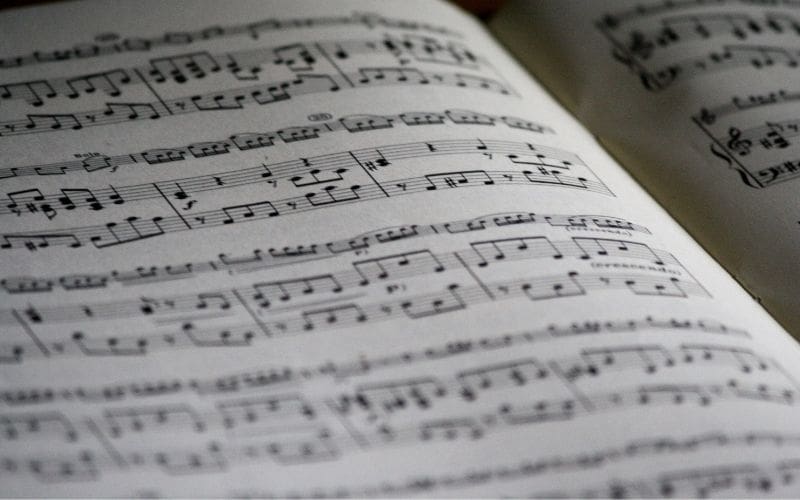
Syncopation adds energy to all types of music by enhancing variation, character, and groove to what would usually be unmoving rhythms. It helps the music to become exciting. Without it, rhythms become stagnated. When rhythms are limited to a straight pulse music sounds boring and robotic.
When syncopating rhythms there is room for a new creation of musical exploration. Syncopation in music allows more freedom to show sentiments. Drums, basslines, vocals, leads, guitar, and other instruments can be syncopated. It’s time to get creative!
Are You An Artist?
Get Free Music Distribution and find opportunities to get your music in film, TV, and more through sync licensing. Plus get Music Supervision, Music Publishing, Music Marketing, Artist Development and utilize our Free Artist Websites and Rap Name Generator. Finally, you can amplify your music to those that need to hear it with music promotion, TikTok promotion and professional sharing tool. Why not give the gift of music today with our Gifts for musicians package?
Try all of this out for yourself by joining Мusic Gateway. Get your free trial, no strings attached.






